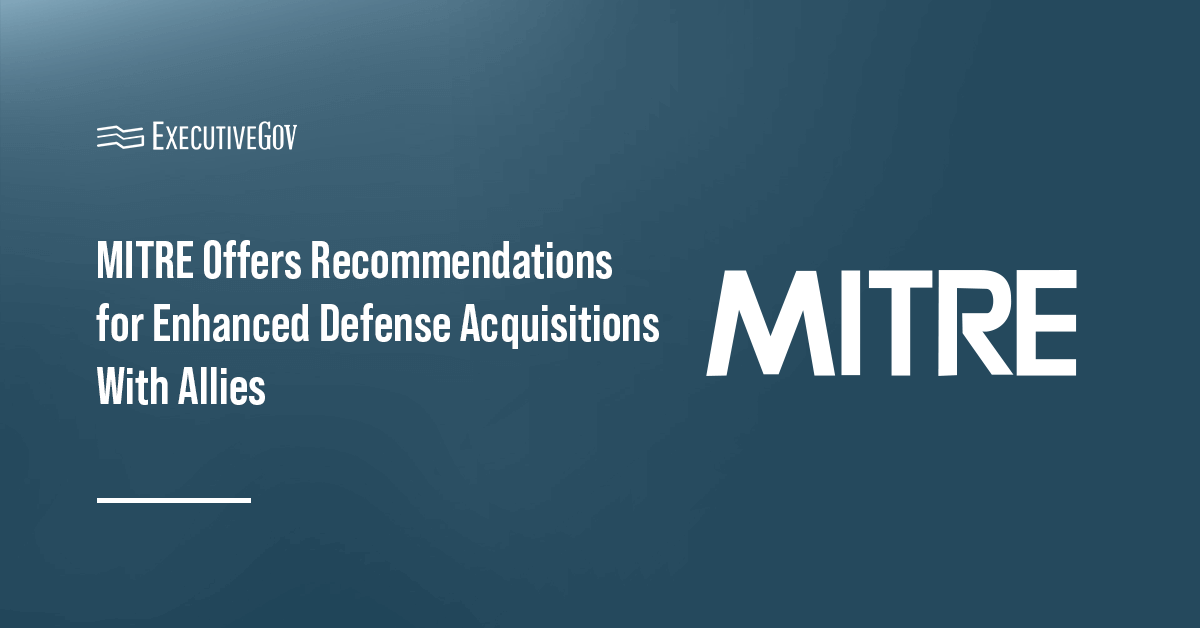MITRE has called for the federal government to modernize defense acquisition and strengthen supply chains by cooperating with international partners and allies.
The not-for-profit organization said its white paper, published Thursday, offers 12 tangible steps to accelerate acquisition reform at the Department of Defense.
The paper was developed using insights from congressional, defense and industry leaders who attended MITRE’s Breaking Barriers Acquisition Summit in May.
Learn more about innovative contracting method and other acquistion reform efforts at the Potomac Officers Club’s 2025 Air and Space Summit on July 31 at the Hilton McLean!
MITRE’s Recommendations for Accelerating Acquisition
The paper’s 12-step recommendations include changes at the policy level and utilizing existing international partnerships to develop a wider range of opportunities.
For instance, it mentioned Pillar Two of the Australia-United Kingdom-United States partnership, which focuses on research and development of new defense capabilities. MITRE pointed out that Pillar Two will explore technologies critical to the Golden Dome project and other programs. The Pentagon must develop a roadmap to ensure that the objectives of Pillar Two are realized.
MITRE also recommended that the DOD establish a Requirements, Acquisition and Programming Integration Directorate, or RAPID, initial operating capability for international collaboration within the Office of the Secretary of Defense. RAPID will be granted with short-term policy exemptions to test acquisition reforms and speed up the integration and delivery of capabilities with allies.
The paper is also urging the DOD to consider an Allied Implementation Review System to facilitate trade of critical technologies, such as artificial intelligence and hypersonics, with the nation’s closest allies.
During his speech at the Breaking Barriers Summit, Navy Adm. Samuel Paparo, commander of U.S. Indo-Pacific Command, emphasized the importance of allies and partners in addressing threats.
“We must break down the barriers to cooperation for data sharing and interoperability by aligning standards and reevaluating restrictions hindering collaboration. Our most powerful advantage remains our relationships with industry and with our allies and partners,” he said. “By breaking down barriers and fostering collaboration, we can and will maintain our technical edge and preserve peace and prosperity.”





